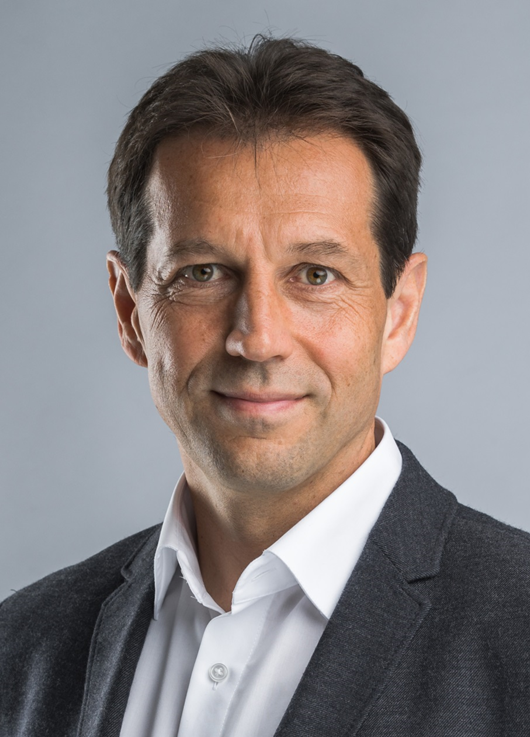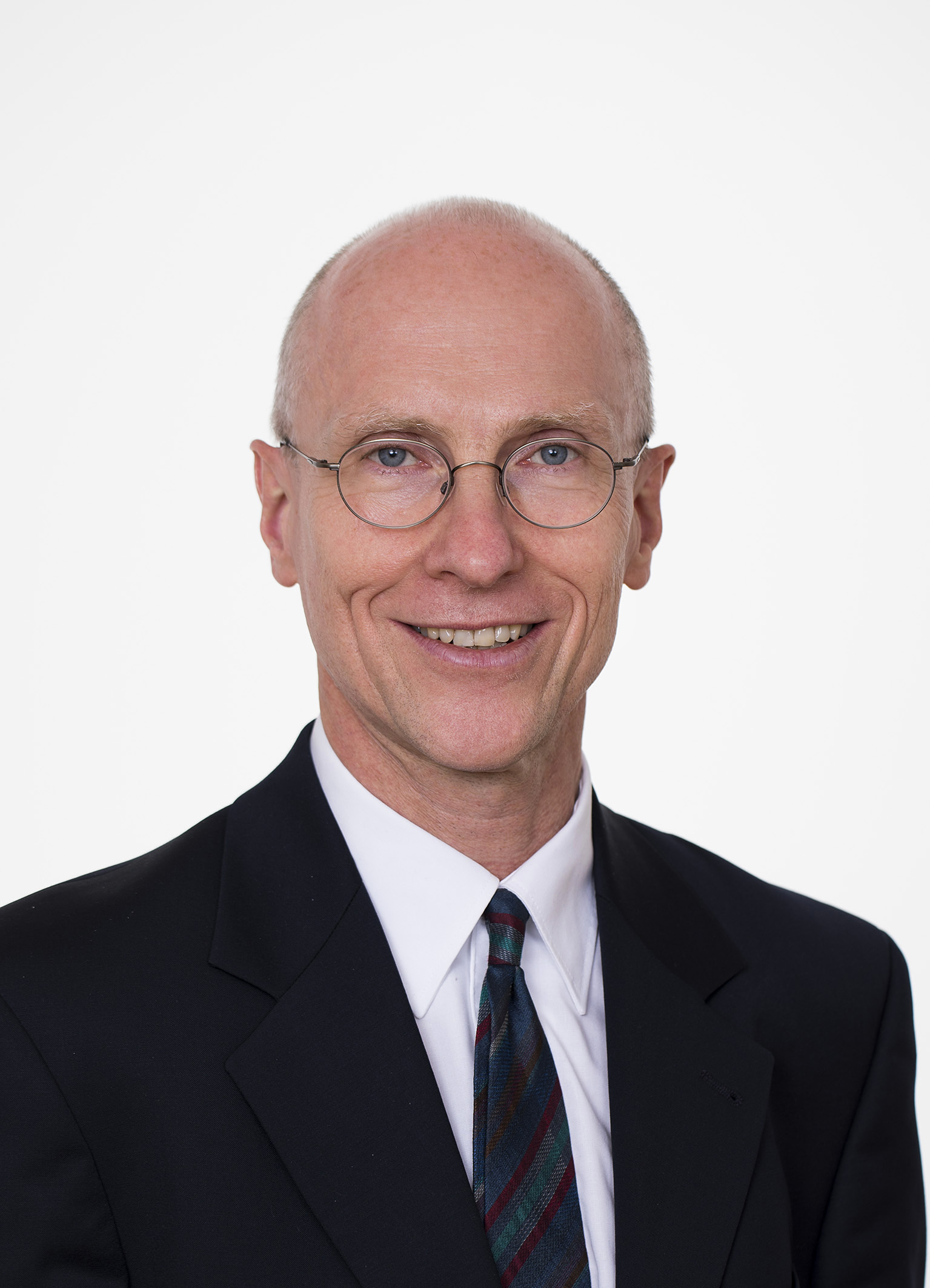|
|
|
Invited Speakers
Dr. Christoph Guger
|
g.tec
"Current and future applications of brain-computer interfaces"
Abstract:
EEG-based BCIs can utilize different approaches, such as: (i) transient evoked potentials (like the N200 or P300), (ii) steady-state evoked potentials (visual or somatosensory) or (iii) motor imagery. P300 BCIs are often used for spelling applications, and were tested with locked-in patients in several studies. These systems typically flash different characters on the screen. By silently counting each time a target character flashes, users can produce a P300 to target flashes only, and the BCI can use this signal to infer user intent. Group studies showed classification accuracies of about 90 % for 81 subjects with a black and white speller, and the newer face speller has led to accuracy as high as 100 % for 17 subjects. P300 BCIs based on auditory or vibrotactile stimuli have also been validated. Both auditory and vibrotactile P300 BCIs typically have a smaller vocabulary and lower accuracy than their visual counterparts. However, they can help patients who cannot see, and vibrotactile BCIs can be used in loud environments. Motor imagery BCIs usually instruct the user to imagine a left hand or right hand movement to produce event-related (de-)synchronization (ERD/S) in the alpha and beta frequency ranges over the sensorimotor cortex. In a group study, 20 healthy people attained a mean accuracy of 80.7% after 20 minutes of training.
For BCI usage it is important to calibrate the system on each individual person. This is done within 5 minutes. Afterwards the user can already control an application in real-time. An important aspect of BCI usage is that EEG electrodes are fixed over the corresponding brain regions to allow high quality EEG control. The talk will highlight important current and future BCI applications like stroke motor rehabilitation, assessment of brain functions, communication with locked-in patients and patients with disorders of consciousness or functional mapping of the eloquent cortex with high-gamma activity. High-gamma activity can also be used to control an avatar or robotic devices in real-time.
|
About the Speaker:
Mr. Christoph Guger, Dr. studied biomedical engineering at the University of Technology Graz and Johns Hopkins University in Baltimore, USA. He then carried out research work at the Department of Medical Informatics (Prof. Pfurtscheller) at the University of Technology Graz and received his PhD degree in 1999. The topic of his PhD work was the design of an EEG-based brain-computer interface. This was the first real-time BCI system with continuous feedback. He also developed the real-time analysis with common spatial patterns, which is still the fastest and most accurate approach for oscillatory BCIs, and also developed a P300 BCI with very high accuracy and speed. In recent years, he also worked with a wide variety of patients in different countries. Currently the BCI technology is used for the rehabilitation of stroke patients, for assessment and communication with locked-in patients or patients with disorders of consciousness, functional mapping of neurosurgical procedures, for control of avatars and drone,.... Currently he is active in about 10 international research projects and is running g.tec medical engineering GmbH in Austria, Spain and the USA.
|
|
 |
|
|
Gerhard Riess
|
Infineon
"Semiconductor-based sensor solutions enabling automated and autonomous driving"
Abstract:
The requirements of Intelligent Driving continuously increase the demand for advanced sensing capabilities in the car. Lidar, radar and camera will be the three key sensor technologies for semi-automated and fully automated cars. Infineon is a technology frontrunner; it delivers expertise in all three complementary sensor systems which provide the redundancy required for autonomous driving. While radar uses radio-frequency electromagnetic waves, lidar employs laser beams to measure the distance to objects adjacent to the car. Scanning lidar systems help to detect small objects on the road.
Infineon already helped to bring radar technology as an additional safety feature to the vehicle mass market: the use of proven technologies from chip mass production and a new chip packaging technology reduced both manufacturing costs and size of radar systems significantly. First lidar systems introduced in premium cars within the next couple of years are based on mechanical scanning mirrors and, thus, are bulky and rather expensive. To become a standard feature in all car classes, lidar systems need to be semiconductor-based, thus getting more compact, cost-effective, and robust. Like with radar, Infineon intends to make lidar an affordable feature for every new-built car worldwide.
|
About the Speaker:
Since June 2017 Gerhard Riess is heading the Infineon Austria Technologies AG affiliate Danube Integrated Circuit Engineering (DICE) in Linz as Managing Director. In addition he still acts in his former role as Senior Director Radar Excellence at Infineon in Munich. In both roles his main focus is to strengthen Infineon’s market leadership position for 77GHz Radar products focused towards automated and autonomous driving solutions. Gerhard Riess graduated at HTL Innsbruck focused on Communication Technologies and Electronics. Since then he has gained more than 25 years professional experience in various engineering and business functions in Automotive, Mobile Communications and Semiconductor industry. Until 2010 he worked for Infineon in Munich in various roles for 14 years already. After 5 years at Intel Corporation in Munich he returned to Infineon in 2015.
|
|
 |
|
|
Dr. Manfred Sust
|
RUAG Space
"Of New Space and Old Men – Trends and Visions in Space Electronics"
Abstract:
Microelectronics is an enabling technology for all space system elements including launchers, space-stations, crew-transportation vehicles, satellites as well as lunar-, solar-system- and deep-space missions. However, space electronics is intended to be deployed in fairly distant and distinct, even hostile environments so that contemporary terrestrial microelectronics has hardly ever been directly applied in professional space engineering. On the contrary, with both interest and experience in space growing steadily since the 1950ies, stringent space standards, imposing either dedicated, strictly controlled component developments or up-screening and re-packaging, have been emerging. Consequential threats are conservative or even old-fashioned engineering solutions, considerably lower performance relative to the capabilities of comparable terrestrial systems, high costs due to stringent standards regulating engineering as well as parts-, materials- and processes selection and finally, very long project schedules for a space mission to materialize from a seeding idea as starting point.
On the other hand, future life has been projected along the lines of unlimited mobility combined with reliable autonomous operation of globally distributed assets and commodities, e.g. Internet of Things. The key to this vision is fully meshed wideband communication connectivity in spite of severe bandwidth limitations of the electromagnetic spectrum from RF to optical, which can only be overcome by exploiting all apparent and non-apparent signal orthogonality within fixed terrestrial and mobile communication channels and by making good use of any additional physical communication path as, for example, offered by communication satellites. Consequently, satellite communication is on the move from being a gap-filler- and niche-application to becoming a main-stream telecommunication system element. In this way, re-orienting the interest in space from being exploratory and military in nature to highly commercial and competitiveness driven, the paradigm of high reliability- and dependability engineering is being challenged by alternative routes already taken by small-satellite missions, new launcher initiatives and mega constellations of which at least a sub-set may be summoned under the term “New Space”. The present note aims at the identification of technical grounds behind buzz-words and at a fair comparison of alternative space electronics engineering concepts with classical approaches.
|
About the Speaker:
Apart from heading the Engineering Department as Senior Manager at RUAG Space GmbH in Vienna, Manfred Sust is RUAG Space Corporate Product Lead Engineer for Signal Processing and GNSS Receivers. He holds a Master’s degree in Electrical Engineering and a Dr. techn. degree in Communications Engineering from the Vienna University of Technology. Manfred Sust has been working with digital Spread-Spectrum Systems both terrestrial and spaceborne for more than three decades and with spaceborne GNSS systems for almost 20 years. His current focus is on the definition of an innovative digital payload processor for high-throughput satellites.
|
|
 |
|
|
|
|
|